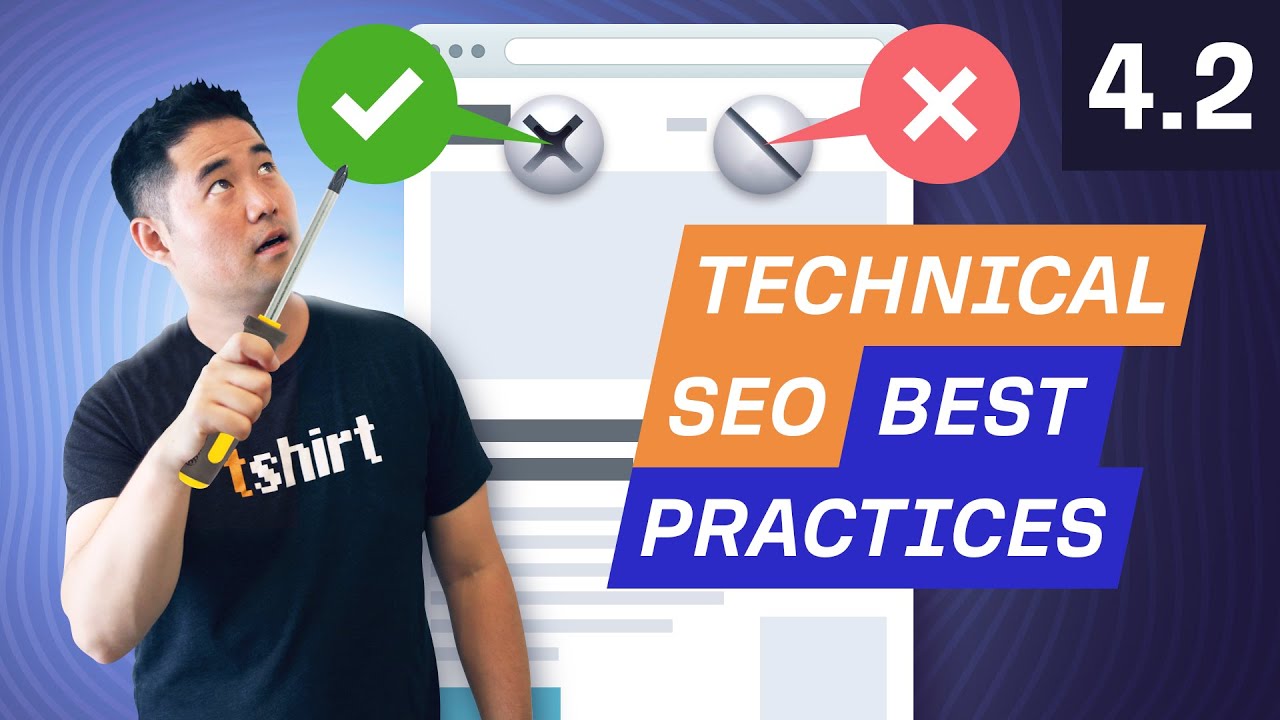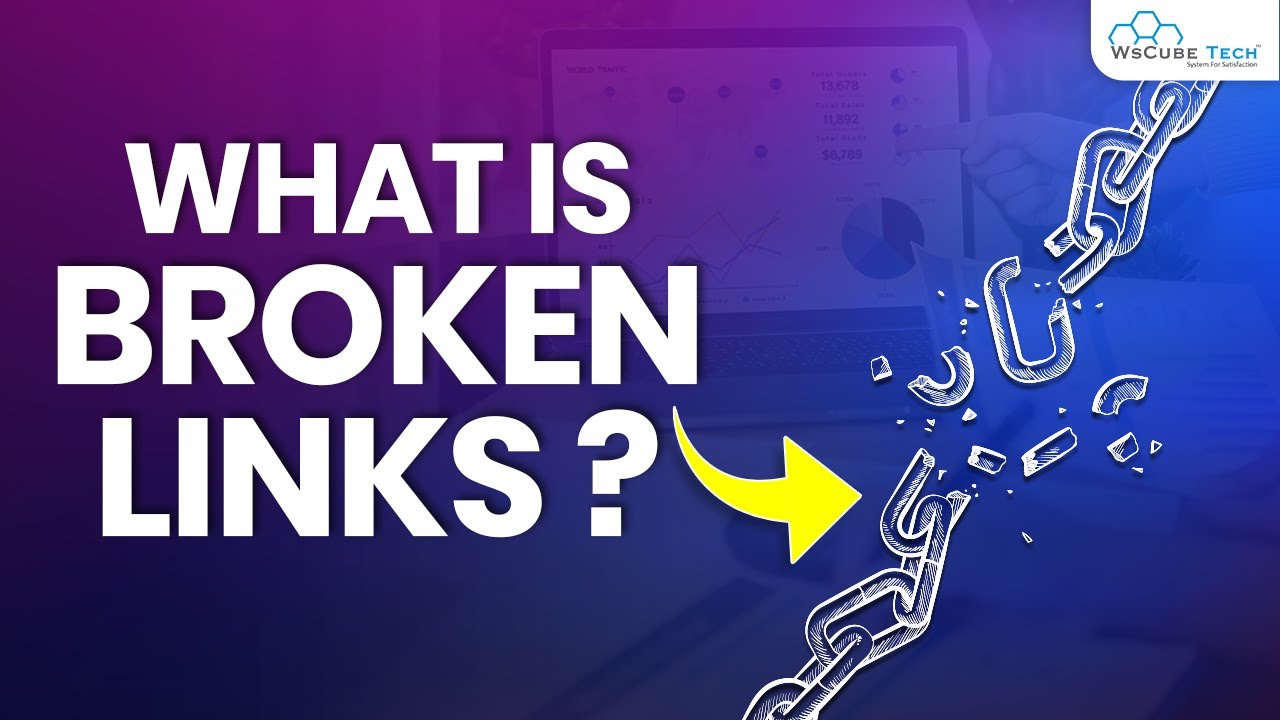Want a complete technical SEO checklistthat will help you get more organic traffic to your site and rank higher on Google? Stop looking.
Technical SEOis something that only a few people use in a serious way, but it is still something that everyone does. Well, if we look at SEOclosely, what part of it is not technical?
We wanted to cover, in the best way possible, all the things that are important for making your website user-friendly, efficient, visible in SERP, functional, and easy to understand. So, gather up all the information on your site, and let's get better.
What Is Technical SEO?

Technical SEO Best Practices for Beginners - 4.2. SEO Course by Ahrefs
Technical SEOis a wide field that includes site speed, broken links, metatags, and site security, among other things. All parts of technical SEOare geared toward making your website easier to crawl and index.
Crawlability has to do with how easy it is for a search engineto get to and crawl through your web pages. Indexability, on the other hand, lets search engines look at your page contentand store it in a huge database so that it can be shown in response to relevant search queries.
When it comes to technical SEO, problems with crawlability and indexability can hurt your search engine rankings early on. If your website isn't easy to crawl and index, web crawlers won't be able to get to its content. Web crawlers have a crawler budget or a set amount of time they can spend on each website.
If web crawlers spend too much time and energy trying to figure out how toget around your website instead of crawling the content of your pages, your website might not get indexed. Because of this, it won't show up in SERPs, and even worse, Google can punish you for it.
Why Is Technical SEO So Important?

What is Technical SEO and Why is it Important? - 4.1. SEO Course by Ahrefs
Most digital marketers focus on choosing high-ranking keywords, optimizing page content, and getting quality backlinkswhen making a full digital marketing strategy.
Even though you can't say enough about how important these on-page and off-page SEO techniques are, technical SEO is just as important if you want to get ahead of the competition.
Search engines give more weight to web pages that are useful, mobile-friendly, and easy to navigate. By optimizing your site's key technical SEO elements, you make it easier for search engines to figure out how valuable your site is.
It also protects your website from technical SEO problems that could keep you from showing up in relevant search results and giving page visitors a good online experience.
If you don't pay attention to the important parts of technical SEO, you might miss out on chances to spread your brand's message. Also, it makes your website completely unreachable by search engines and invisible to people who use the Internet.
How Does Technical SEO Work?
Search engines have one goal: to give people who use them the best search results possible based on what they are looking for. To do this, search bots crawl and evaluate web pages based on a number of technical SEO ranking factors to figure out what your site is about and what it contains.
Your technical SEO elements may have problems that can be fixed quickly or need more research. This is where technical SEO for WordPresscomes in.
Technical SEO experts look at your site's structure, hreflang, internal and external links, codes, canonical tags, 404 pages, and 301 redirectsand make changes to them so that search bots can crawl and index your site.
Technical SEO experts also do regular SEO technical audits to improve the technical parts of your website and make sure it doesn't have any technical SEO problems. Before you can learn more about the important technical SEO factors, you need to know what the most common SEO mistakes are.
Common Technical SEO Issues You Need To Avoid

Remodel Your SEO: (How to Avoid Common Technical SEO Mistakes on Your Website)
SEO technical issues vary. But technical SEO mistakes, no matter how big or small the bug that messed up your technical SEO audit checklist, can hurt your search rankings in the long run.
Businesses should keep an eye on any problems with their website's page speed and indexing so that their web pages don't stop search engines from crawling them.
Think of the basics of SEO website technical audit as the backbone of your site. Any problem with your technical SEO checklist can hurt your performance as a whole.
Also, a complete SEO checklist and a strong technical SEO strategywork together to keep your website safe and running well. The technical SEO experts talked about the most common technical SEO problems you need to watch out for:
- Over-indexing
- Missing HTTPS security
- Random blog tag pages and graphic assets
- Missing or non-optimized meta tags
- Duplicate or missing information
- Multiple versions of the homepage
- Low-value pages
- Poor navigation
- Slow page speed
- Missing alt tags and internal links
- No XML sitemaps
- Broken links
- 404 pages
These problems don't just affect how well your website works. They also have a big effect on how people use your site as a whole, and it's no secret that user experience(UX) is becoming more important in search engine rankings.
Ultimate Technical SEO Checklist

SEO Checklist: How to Get More Organic Traffic (Complete Tutorial)
Install SSL And Make Your Website HTTPS
As the owner of an e-commerce business, you should know that Google has made HTTPS a requirement for all sites to keep them safe. Before you can do this, you must first install an SSL certificate to protect the website as a whole.
SSL certificates don't have to be expensive. You can find a cheap SSL certificate in many places.
Your website's ranking will go up if you have an SSL certificate, and all the information between the web server and the site will be safe. So now is the right time for you to switch your website from HTTP to HTTPS in order to put security first.
Identify Any Crawl Errors
Make sure that your website is crawlable. When Google or another search engine "reads" your page with their bots, this is called "crawling." This is the first thing you need to do to get your page to show up in search engine results.
Most of the time, it takes Google a few days to crawl your site and put it in the search engine results. If there are problems with crawling and indexing, your SEO won't be as good as it could be.
Make sure you keep an eye on the Google Console and check for errors on a regular basis, as crawling errors can affect how well a website ranks. They can also change how your website works in general.
Find And Fix Broken Links

What are BROKEN LINKS? | & How do You Find & Fix Them? - SEO Tutorial
Find and fix broken links as soon as possible because they will directly affect how well your website works. A broken link is a page that can't be found or accessed, and you should try to figure out why it's broken.
Often, broken links are referred to as dead links. When a user tries to click on a certain link, an error message pops up and the page won't load. Some of the most common causes of links that don't work are:
- 404 Page Not Found: This means that the server doesn't have the page.
- 400 Bad Request: The host server doesn't know what the web page URL is or can't find it.
- Bad Host: This error message means that the server with that name does not exist.
- Bad URL: This means that something went wrong when the URL was being made. The wrong protocol, missing braces and slashes, etc., are all examples.
- Bad Code: This means that HTTP doesn't work.
- Empty: In this case, the host server sends back no responses that have no data.
- Timeout: This is an error that happens when HTTP requests run out of time while the click is happening.
- Reset: This is an error that means the host connections have been lost. This could be because the connections are set up wrong.
If there are broken links, Google won't give you the right results. But the broken links will make the website less useful. This is one reason why your page's rank might go down. So, you should always make sure your site is good.
Improve The Loading Speed Of Your Website
It is important to check how fast your website loads and try to speed it up as much as possible. This is a step that no businesscan skip, because if they do, the user experience will be terrible.
The faster your website loads, the better Google will rank it. People who visit your website don't like having to wait for pages to load. If this happens, they will leave your site right away. Check to see how fast your site is and make changes right away.
Optimize The H1 Tag For All Pages
H1 tags are important parts of a webpage, and they have the same weight as the page's title. Technical SEO on-page optimization includes H1 tags, which are very important for optimizing the content. Let's take a look at how to write a good H1 Tag for SEO:
- Your H1 tag should be the same as or very similar to the titles of the other pages.
- Users should be able to see your H1 tag.
- You can use a different style for your H1 tag than for the other headings on the page.
- Each page can only have one H1 tag.
- Optimize your posts' other headings, like the H2 and H3 headings, as well as the H1 tag.
Use Google Search Console To Monitor Your Page
It's always a good idea to look at what Google says about your page. At the same time, if Google can't get to your site, you can't move up in the rankings. So, the best way to check the URL feature is to use the Google Search Console(GSC).
You should enter a website page at the top of the GSC. Then, you can see how Google sees your page. This way, you can see how Google sees your website page and make changes to make it better.
Make Sure Your Site Is Mobile-friendly
Your e-commerce site will be better if it works well on mobile devices. Your business will benefit a lot from having a website that works well on phones. Google's mobile-first indexing gives websites that are made to work well on mobile phones a higher ranking.
Also, there has been a big increase in mobile phone traffic over the past few years. Simply put, if your web store isn't optimized for mobile, you're missing out on a lot of traffic from mobile users and higher rankings from Google.
So, making your web store mobile-friendly will help people find it in searches, learn about your brand, and have a better experience overall. This will help your website, your business, and the overall efficiency of your e-commerce site.
People Also Ask
What Are Some Examples Of Technical SEO?
Building an XML sitemap for your site is an example of technical SEO. Setting up your website correctly so that every page works as it should is the first big step in making a technical SEO plan. This file is crawled by Google and other search engines to learn more about your site.
What Is The First Thing To Do Before Doing SEO?
Your first step in SEO should be to do keyword research. It is important in two common situations: Getting to know your niche: When starting a new website, keyword research is a great way to get an idea of what subtopics people in your niche or industry are interested in.
How Is Technical SEO Done?
Use one CSS stylesheet instead of multiple CSS stylesheets or inline CSS. A CSS stylesheet is a piece of code that tells a website browser how to show your website.
Ensure your image files are as small as possible (without being too pixelated) Make your web pages smaller (this can be done using a tool called GZIP).
Conclusion
Having an e-commerce business and keeping it going is now a very hard thing to do. Keep these technical SEO aspects in mind and use this technical SEO checklist to quickly learn key SEO concepts and stabilize your website.
If you improve your SEO, your sales will go up and your customer relationships will soar. Even small changes to a website can cause changes in its technical SEO site health. If you change the anchor text on your own site or on the site you are linking to, the link will no longer work.